
jeudi 28 mai 2009
:: Black holes

:: Supernovae
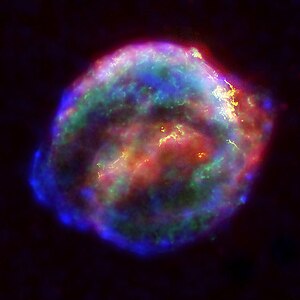 Image via Wikipedia
Image via Wikipedia
:: Atlantis est revenue / came back !

:: Neptune
- Distance to the sun: 4,498,252,900 kms.
- Diameter: 49,528 kms.
- Duration of rotation: 16.11 days.
- Duration of revolution: 60 181 .3 days.
:: Stars

 Stars
Stars Some of them are big blue ones, big red ones, yellow ones and red ones. Big blue ones are the hottest ones.
Red ones are stars at the end of their lives and they are the coldest on
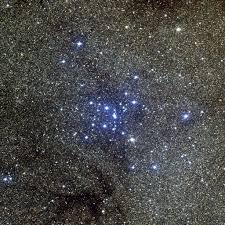 es.
es.Yellow stars are like our Sun (which is a yellow star!).
Red ones are the best known ones.
In countries that do not have too much polution we can sometimes see more than 3000 stars all over the sky.
The big ones are 100 to 200 times larger than the Sun. Stars are composed of gaz and fire.
lundi 25 mai 2009
:: Galaxies

- This is a spiral Galaxy in black and white (some look a bit different). Our Galaxy is a spiral one.
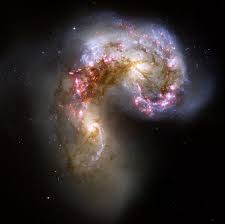
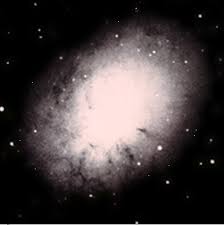
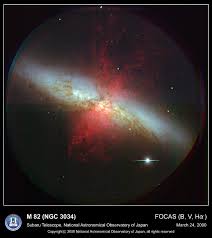
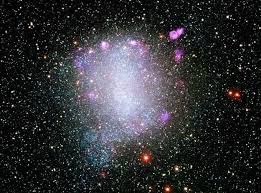

- These are some pictures of Irregular Galaxies.

- This is a picture of an elliptic galaxy. Around there are other galaxies.
vendredi 22 mai 2009
:: Mars 2 moons: deimos and Phobos
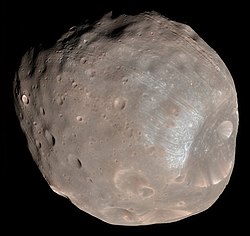

jeudi 21 mai 2009
:: Mars
 It is located just after the Earth and it is the seventh largest planet.
It is located just after the Earth and it is the seventh largest planet.- Distance to the sun: 228 million kms.
- Diameter: 6794 kms.
- Duration of revolution: 687 days.
- Duration of rotation: 1 days and 37 minutes.
- Temperature: -133 °c to 27°c!!!
mercredi 20 mai 2009
:: Uranus moons
Small moons:
Juliet
Portia
Rosalind
Belinda





mardi 19 mai 2009
:: Uranus rings
Uranus has 13 rings that are kind of dark and are made of rock and dust. They are hard to observe.
:: La réparation du satellite Hubble !:Reparation of hubble!
lundi 18 mai 2009
:: Uranus
 Uranus is the third Gaz Gigantic Planet And seventh from the sun.
Uranus is the third Gaz Gigantic Planet And seventh from the sun.- Diameter: 51 100 kms.
- Distance to the sun: 2,9 milliards of kms.
- Duration of rotation: 17 hours.Uranus looks like it is on its side and it turns in that orbit.
- Duration of revolution: 84 hours.
dimanche 17 mai 2009
:: Jupiter
Jupiter is the fifth planet and the largest one in the solar system.
There is a ring system, but it is very faint and is totally invisible from the Earth.
Jupiter is the third shiniest after the sun!
Jupiter has been visited for the first time by the satellite Pioneer 10.
Jupiter has a great red spot (which is a storm), that has been observed 300 years ago.
The spot is big as 3 times the Earth!
The comet Shoemaker-levy 9 crashed into Jupiter. What we could see was incredible!
Jupiter is composed of gases caled hydrogen and helium, and other gases over a tiny rocky core.
Most other planets in other solar systems are a bit heavier than Jupiter but Jupiter is larger than them.
- Duration of rotation : 10 hours!
- Duration of revolution : 12 years!
- Diameter : 142,981 kms. 11 times the Earth!
- Distance from the sun: 779 million kms.
samedi 16 mai 2009
:: Venus
Venus is the second planet from the sun, and the seventh largest. It is Earth's neighbour and has been observed by satellites.We sometime call Venus the Evening star because at night (a long time ago) people thought it was a star and it was the first to shine. Now we know Venus is not a star but a planet.
Quick facts
- Moons: none
- Distance from the sun: 108 200 000 kms.
- Diameter: 12104 kms.
- Duration of revolution: 224,7 days.
- Duration of rotation: 243 days.
Venus's rotation is so slow that a Venus year is smaller than a Venus day.
At some point, astronomers thought Venus was divided in 2.
Surface
About 85% of Venus's surface is covered by volcanic plains covered by layers of lava. There are a lot of craters on Venus but still very few compared to Mercury and the Moon.
Spacecrafts
The first spacecraft to observe Venus was Mariner 2. Since then other spacecrafts have orbited Venus. A few landed on the planet's surface, were able to send a few pictures back to Earth and melted.
Orbit
Venus's orbit is the one that is the less elliptical. It is the only planet to turn in a different direction.
Atmosphere
Venus's atmosphere is composed of: 90.5 % carbon dioxide, 3.5% nitrogen and other gases.
 Venus's clouds contain a little water vapor, but we have little reason to think that water in any form exists on the planet itself. We think that most of the water that initially existed on Venus evaporated, when the Sun started to get warmer, and moved up to the upper atmosphere. This created a greengas effect, making the planet even warmer.
Venus's clouds contain a little water vapor, but we have little reason to think that water in any form exists on the planet itself. We think that most of the water that initially existed on Venus evaporated, when the Sun started to get warmer, and moved up to the upper atmosphere. This created a greengas effect, making the planet even warmer.
:: Jupiters : 63 moons !
- Distance from Jupiter :670 900 kms.
- Diameter: 3 138 km.
- fourth biggest satellite from Jupiter
- Discovered by: Galileo
- Distance from Jupiter: 421 600 km
- Time to orbit Jupiter: 1. 77 days
- Diameter: 3 643km
- Discovered by: Galileo
- Distance of Jupiter: 1. O7 million km.
- Time top orbit Jupiter: 7.15 days
- Diameter: 5262 km
- Distance from Jupiter: 1.88 million km
- Time to orbit Jupiter: 16.69 days
- Diameter: 4821km
lundi 11 mai 2009
:: Saturn moons
Main moons of Saturn:
Prometheus- Distance from Saturn: 139 353 km
- Diameter: 91 km
- Time to orbit Saturn: 0.61 days
- Diameter: 500 km
- Distance from Saturn: 238 020 km
- Time to orbit Saturn: 1.37 Earth days
- Distance from Saturn: 377 400 km
- Diameter: 1120 km
- Time to orbit Saturn: 2.74 Earth days
- Distance of Saturn: 1.22 million km
- Time to orbit Saturn: 15.9 earth days
- Diameter: 5 150 km
:: Saturn rings
What makes Saturn so beautiful is her rings. The rings of Saturn are much more elaborate than those of any other planets.
Saturn's rings are divided into 7: D, C, B, A, F, G and E. It is hard to see the F and G rings but A, B and C are visible with a telescope.
(the F and G rings are thin)
Whene Galileo observed the rings for the first time he thought they where moons.
The rings of Saturn are about the 4,000,000 kms wide!
The distance of Saturn to the rings is like the distance of earth to the moon.
They are composed of: icy snowballs or ice covered rocks.
(This picture shows the B ring)
![Reblog this post [with Zemanta]](http://img.zemanta.com/reblog_e.png?x-id=b72b8531-387e-4b29-8780-2c3c78930e4d)
![Reblog this post [with Zemanta]](http://img.zemanta.com/reblog_e.png?x-id=cf8137d2-d66d-402c-9ec2-790760cc2d8b)
![Reblog this post [with Zemanta]](http://img.zemanta.com/reblog_e.png?x-id=ff36005f-ebb9-43c5-bf51-5d0f7f001a73)
![Reblog this post [with Zemanta]](http://img.zemanta.com/reblog_e.png?x-id=2a3108ff-d9ed-4054-9c3f-234dd51dd4af)


![Reblog this post [with Zemanta]](http://img.zemanta.com/reblog_e.png?x-id=72c5bc83-b9f5-481f-ab77-2c32920ddd3a)
